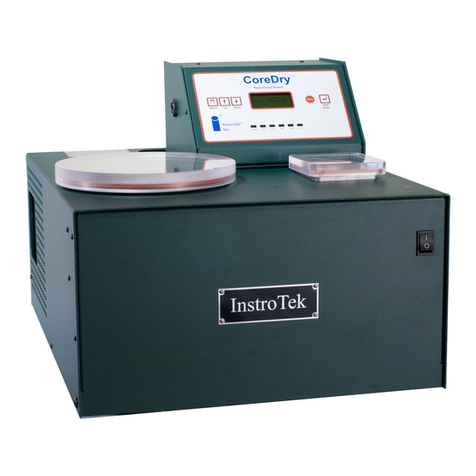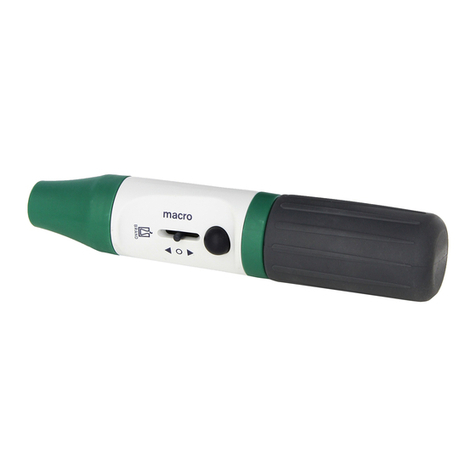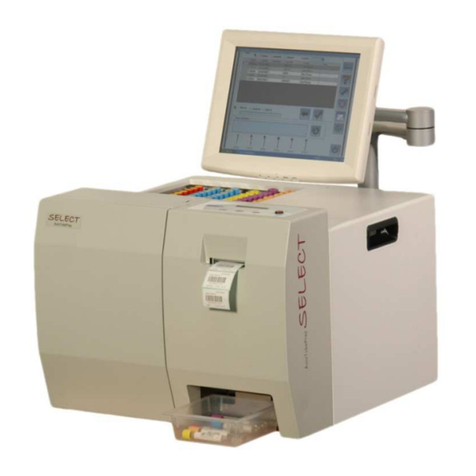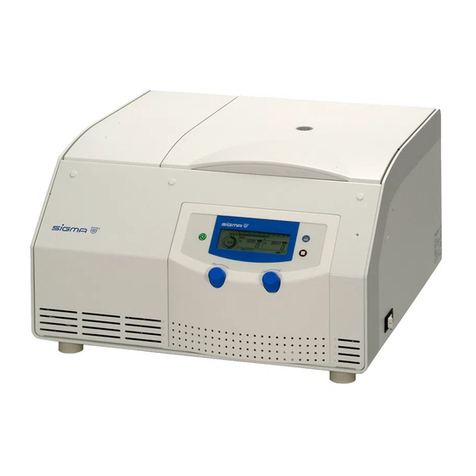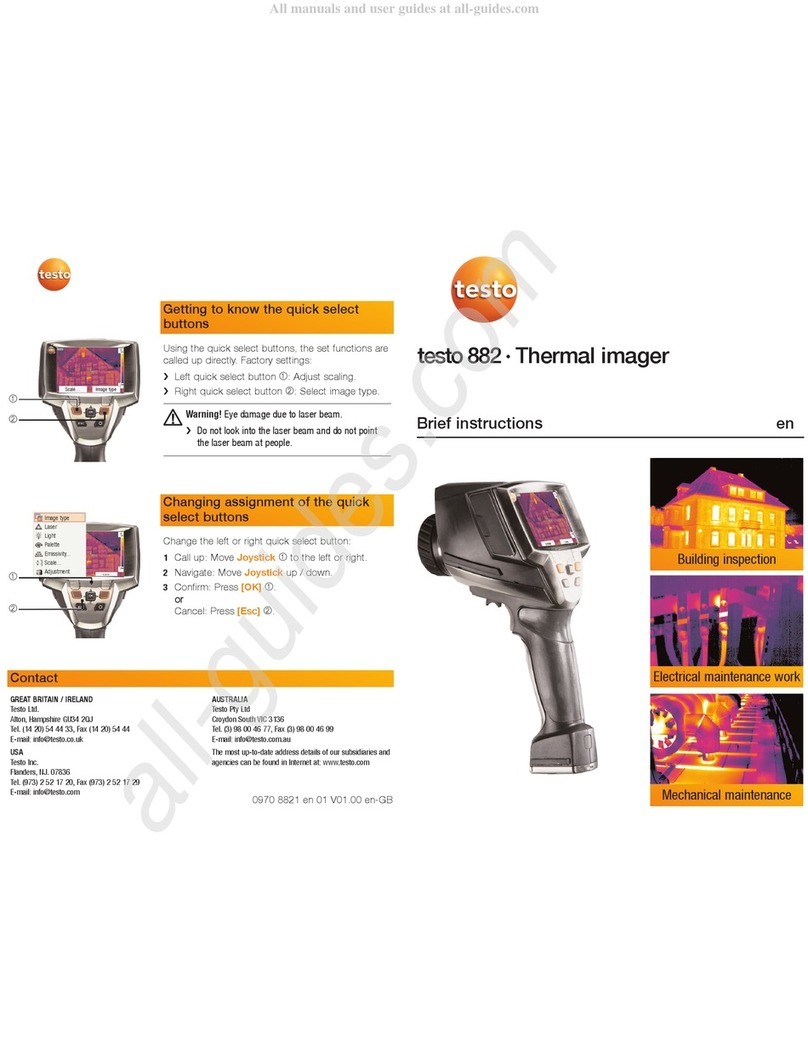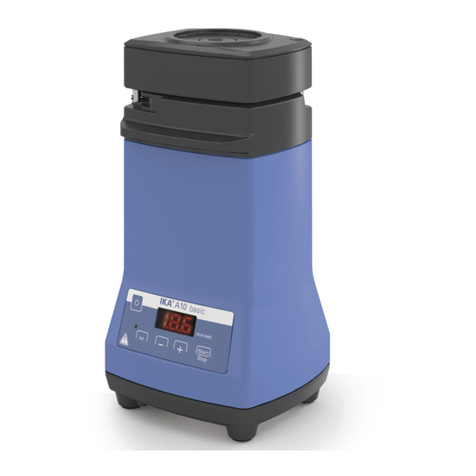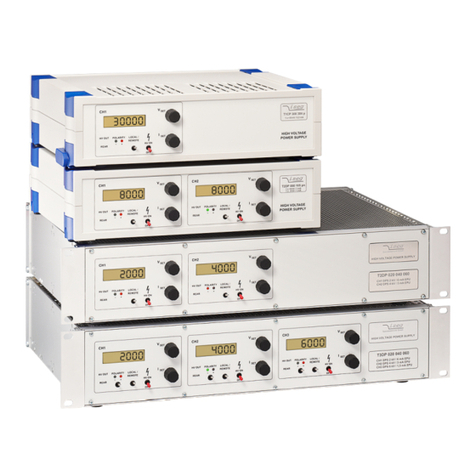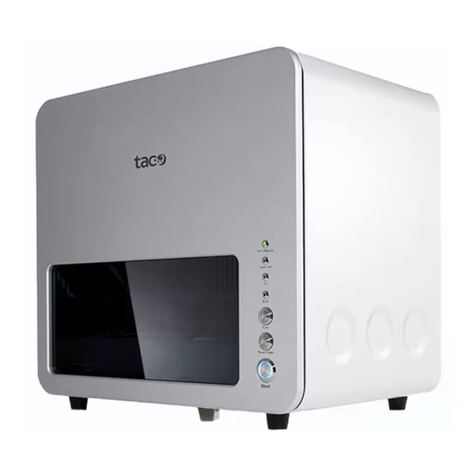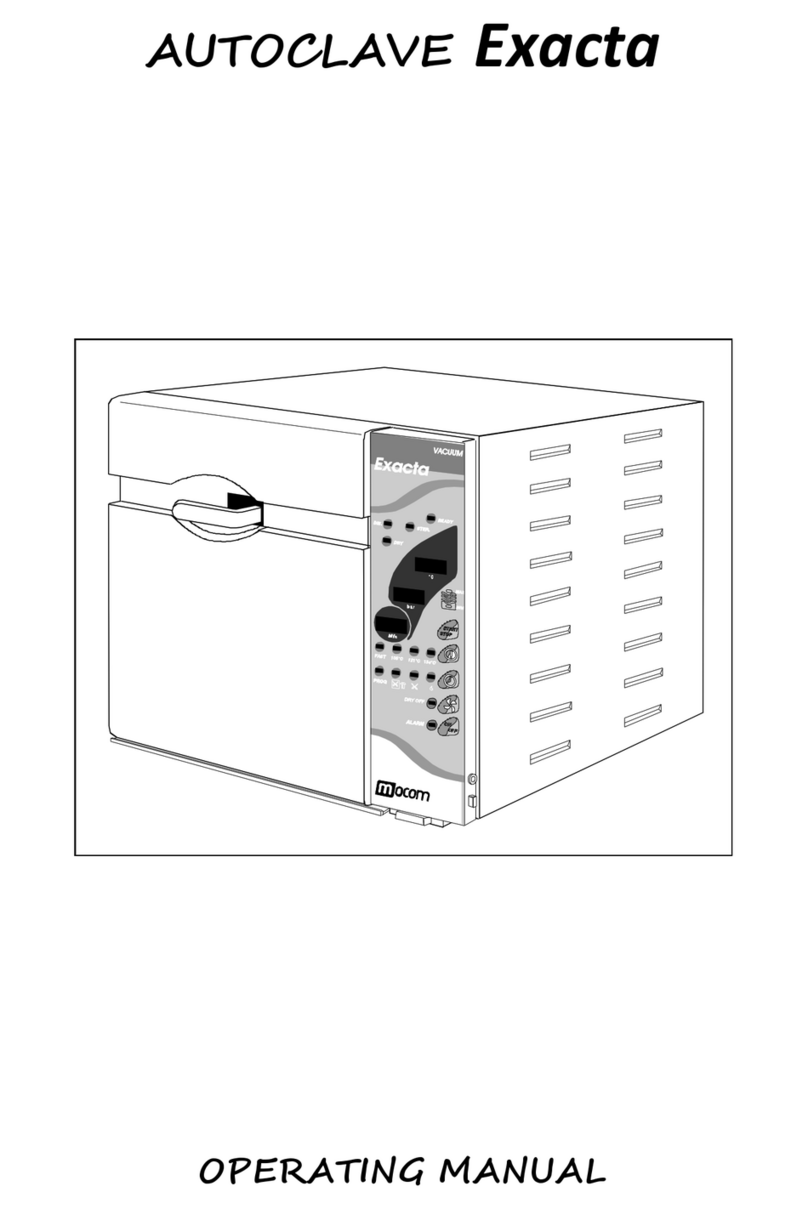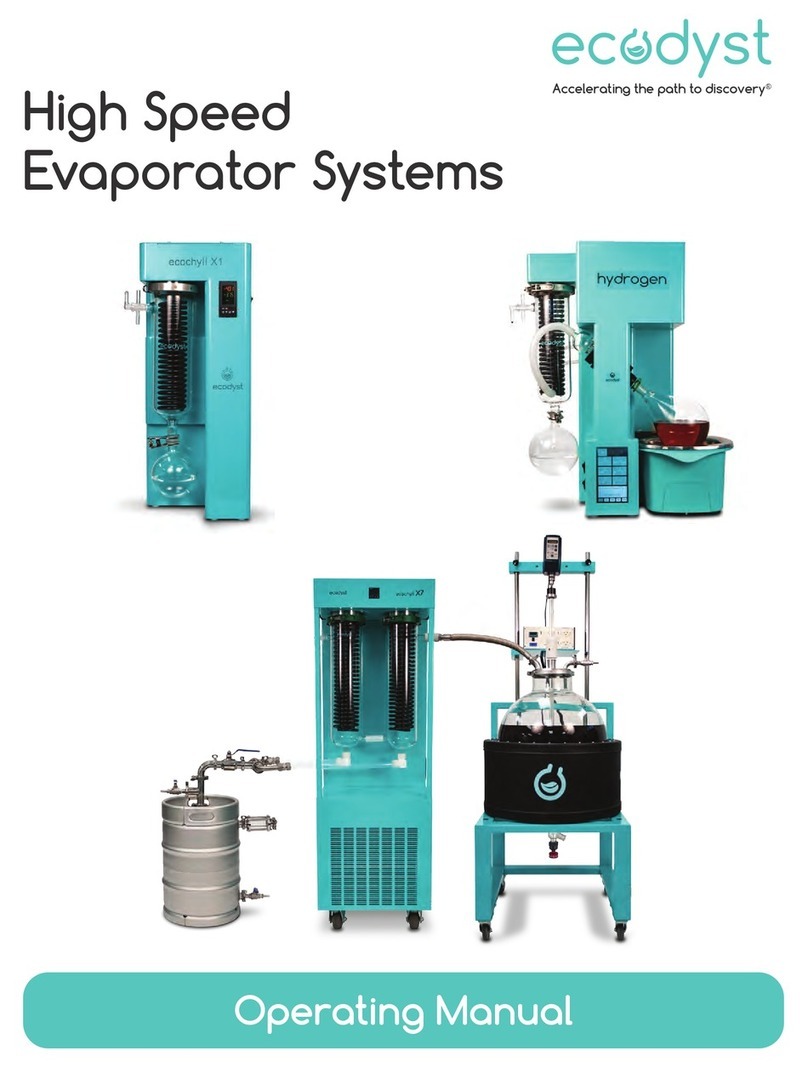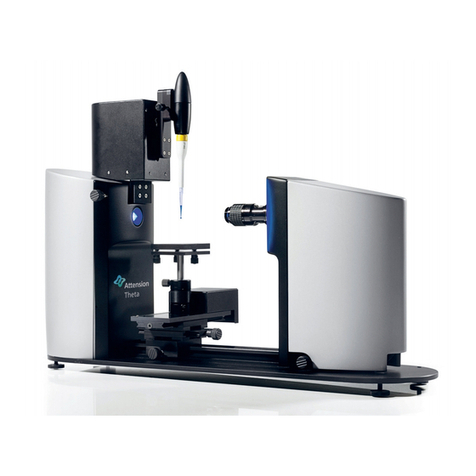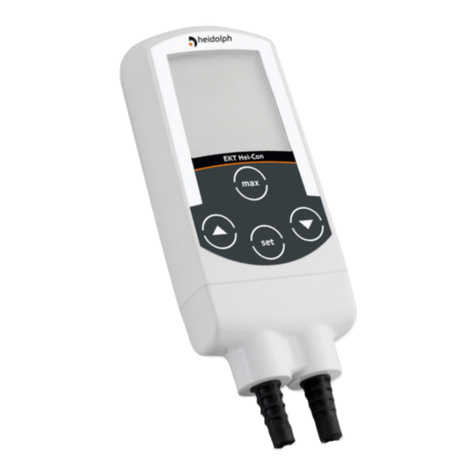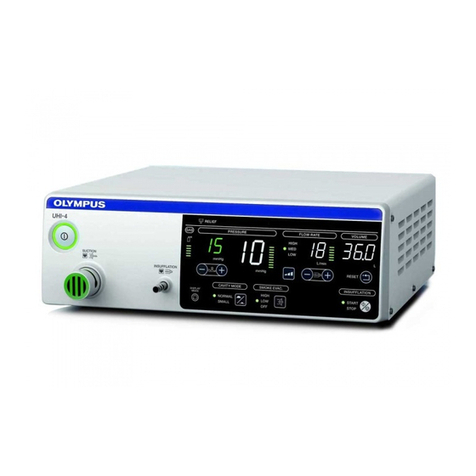InstroTek CORELOK User manual

innovators in instrumentation technology
OPERATING MANUAL
Asphalt Density Measurement System
www.InstroTek.com
CORE
LOK
®

© 2018 InstroTek, Inc.
CoreLok®Software Operation
Manual Revision 24


InstroTek
1
1. Table of Contents
****************************************
1. INTRODUCTION 2
2. STANDARD AND OPTIONAL ACCESSORIES 8
3. CONTROL PANEL 9
4. INSTALLATION OF THE GRAVITYSUITE™ SOFTWARE 10
5. GETTING STARTED 11
6. BULK SPECIFIC GRAVITY (Gmb) OF COMPACTED ASPHALT 13
SPECIMENS (ASTM D6752 & AASHTO T 131)
7. MAXIMUM SPECIFIC GRAVITY (Gmm) OF LOOSE ASPHALT 18
MIXTURES (ASTM D6857)
8. APPARENT SPECIFIC GRAVITY OF FINE AND COARSE AGGREGATES 22
(ASTM D7370)
9. DETERMINATION OF SAMPLE POROSITY/PERMEABILITY USING THE 26
CORELOK MACHINE (ASTM D7063)
10. APPARENT GRAVITY OF PLASTIC BAGS 30
11. ROUTINE MAINTENANCE AND TROUBLESHOOTING 34
12. CONVERSION TABLE 44
13. INDEX 45
14. WARRANTY 47

InstroTek
2
1. Introduction
Increasing use of coarse and open graded mixes has created a need for more
reliable and accurate method of measuring the bulk specific gravity of
laboratory and field specimens. Open graded mixes readily absorb water and
drain quickly when removed from the water tank. The lack of control over the
penetration and drainage of water in and out of asphalt samples creates a
fundamental problem with the water displacement measurement method using
the current procedure (ASTM D2726 or AASHTO T 166) for determination of
specific gravity.
The most efficient and accurate method of correcting for this problem is to seal
the samples prior to testing in water. The current sealing methods, namely,
Paraffin and Parafilm are optimized for 100-mm diameter samples. They are
difficult to impossible to use effectively for 150-mm samples and cause large
measurement variability. The new system explained in this manual provides an
advanced and automatic solution to sealing asphalt samples.
The CoreLok system is a vacuum chamber that is used with specially designed
polymer bags to completely seal field and laboratory asphalt samples from
water during the bulk specific gravity measurements.
The CoreLok is a versatile density system with many different applications. This
device can be used for determination of bulk gravity of compacted asphalt
samples (ASTM D6752 & AASHTO T331), maximum gravity of loose asphalt
samples (ASTM D6857), porosity or permeability of compacted field or laboratory
samples (ASTM D7063), and gravity and absorption of fine and coarse
aggregates (ASTM D7370).

InstroTek
3
System Overview
The CoreLok uses a 1.25 hp vacuum pump in conjunction with control
electronics and a vacuum tight chamber to seal samples. The system is
completely integrated and operates on 120 or 220-volt (optional) power. The
sample is placed inside a specially designed plastic polymer bag, inserted in the
chamber and the door is closed. A switch recognizes the door closure and
activates the vacuum pump. The vacuum pump operates until the vacuum
gauge indicates 99% of full vacuum. An integrated pressure gauge monitors the
vacuum level and displays the vacuum within the chamber. The pump is
capable of producing 29.7 inches (754 mm) of Hg vacuum. At this point the
chamber and the bag are close to absolute vacuum. An automatic sealing
strip heat-seals the bag at the open end and air is allowed to enter the
chamber in a controlled manner. Since the bag is sealed and is under vacuum,
the increased pressure in the chamber forces the plastic bag around the
sample creating a tightly vacuum-sealed sample. Once the chamber reaches
atmospheric pressure, the chamber door automatically opens. The sample can
be removed and tested. The bag density is known and accounted for in the
calculation of the bulk specific gravity.
Critical Measurement Parameters
The following three aspects are important and should be recognized when using
the CoreLok system:
1. Vacuum pressure
2. Testing time after sealing
3. Sample temperature prior to sealing
1. Vacuum Pressure. The pump should be able to create a vacuum of 29.7 in.
(754 mm) Hg inside the chamber. The residual volume after sealing the
sample should be less than 2% by volume of the specimen, the limit required
by the current ASTM D1188 for sealing asphalt specimens. The calculation
based on an asphalt sample 5” in height and 6” in diameter with a volume of
141.4 in3and 1% residual volume yields a pressure of 0.3 in. Hg using Boyle’s

InstroTek
4
Law, which would indicate a vacuum pump requirement capable of 29.7 in.
Hg (30-0.3 in. Hg) of vacuum.
P1V1= P2V2
Where, P2is the pressure on the bag during the sealing process, V2is the void
volume not occupied by the plastic bag after sealing and V1is the total air
volume of the bag not occupied by the core.
The vacuum performance of the unit should be checked on a yearly basis, or
as needed, by using an absolute vacuum gauge that can be placed directly
inside the chamber. This will ensure the integrity of the pump, vacuum hoses
and the seals.
2. Testing time after sealing. The CoreLok plastic bags are designed with multi-
composition layers of plastic. The requirement for the plastic is to be flexible
to conform to the sample and to provide enough strength to resist punctures
from asphalt samples. To accomplish this specification the molecular
structure of the bag is designed to hold vacuum levels produced by the
CoreLok for approximately one hour. The water displacement test should be
conducted within 2 minutes after the sealing process. Samples can be
tested after this time but two items have to be looked at prior to testing. First,
a major leak can occur in the bag by mishandling of the bag before or after
the sealing process. This could easily be seen within a few seconds of
sealing. With careful handling, most of these leaks can be avoided. Second,
due to excessive stretching of the plastic around sharp points, “micro” leaks
can occur. This can be defined as thinning of the plastic, which will allow air
into the bag over a very long time (hours). This does not affect the results if
the sample is tested within the first 30 minutes of the sealing process. The
surface tension on the bag is sufficient to keep water out of the bag.
For best results, the bag should be checked prior to testing to ensure tight fit
around the sample. Presence of a major leak is obvious in this process with
immediate loosening of the bag.
3. Sample temperature prior to sealing. Introduction of air into the chamber
after heat- sealing the bag is done in a controlled manner to avoid artificial
compaction of the sample in the chamber. The bag conforms to the sample
in a slow and methodical way. Tests with the CoreLok indicate that

InstroTek
5
temperatures below 120º F will not affect the sample density. It is
recommended that samples be cooled to this temperature prior to sealing.
Table 1, shows data on nine different asphalt samples tested at room
temperature, 120F, 150F and 200F. The density errors as seen from this test
range from 0 to 0.019 g/cm3. The maximum error occurred at 150F on a
coarse graded mix. To ensure accurate density measurements by the
CoreLok test, we recommend temperatures of less than 120F.
Table 1: Density (g/cm3) of Samples Tested in the CoreLok at Different
Temperatures
Sample
Density @
Room
Temp
g/cm3
Density @
120F
Density @
150F
Density @
200F
Difference
g/cm3
1. Fine
2.310
2.303
0.007
2. Fine
2.273
2.265
0.008
3. Coarse
2.214
2.233
0.019
4. Coarse
2.097
2.105
0.008
5. Fine
2.302
2.304
0.002
6. Fine
2.282
2.282
0.000
7. Fine
2.308
2.300
0.008
8. Coarse
2.210
2.219
0.009
CoreLok Applications
In addition to measuring bulk specific gravity of compacted specimens, the
CoreLok can also be used for the following applications:
1. Maximum specific gravity (Gmm) or “Rice” specific gravity of loose
asphalt mixtures. Special channel bags are required for this test.
2. Apparent specific gravity of fine and coarse aggregates.
3. Bulk specific gravity and absorption of fine and coarse aggregates.
4. Porosity or permeability of field and laboratory samples.
5. Indirect determination of percent asphalt content

InstroTek
6
Safety Precautions
Always follow these basic safety precautions when using electrical or pump
appliances:
Read all instructions carefully.
Take notice of all warning labels located on the CoreLok.
Do not tip the CoreLok on its side.
Do not use on wet surfaces.
Do not immerse any part of the CoreLok, the CoreLok cord or plug into
water or other liquids.
To disconnect, grip plus and pull from wall outlet. Do not disconnect by
pulling on the cord.
Do not allow cord to dangle over or touch hot surfaces.
Do not operate the CoreLok if the cord is damaged in any way.
Do not place on or near a heat source.
Use of accessory attachments not recommended or sold by InstroTek may
be dangerous and my void your warranty.
Do not operate the CoreLok with the housing removed.
Do not operate if the chamber lid appears to be damaged or cracked.
Do not lay hand on the intake to check pump suction. Exposure of any
part of the body to the vacuum can result in personal injury to the
exposed part.
Never operate the pump with an open, accessible inlet. Vacuum
connections, oil filling opening or oil draining opening must not be
opened during operation of the pump.
Beware of hot surfaces that can cause burns. The operating pump can
have surfaces that reach temperatures higher than 80 C (175F).The bag
sealing edge will still be hot immediately after operation, so avoid
contact.
Only allow authorized personnel with proper machinery operating
knowledge to transport, install, operate, perform maintenance (servicing)
or dispose of hazardous wastes.
Do not use for other than intended use.

InstroTek
7
Product Specifications
Overall Size
19” X 19” X 25” (483 X 483 X 635 mm) (W X H X Depth)
Chamber Size
16.75” X 7.25” X 19.6” (425 X 184 X 497 mm) (W X H X
Depth)
Seal Bar
16.0” (406 mm)
Pump
Busch 1.25 h.p.
Vacuum Level
29.95 inches (760.7 mm)” Hg, 1 TORR, 1.33 mbars
Mode of
Operation
Automatic and controlled by a gauge to 99% of full
vacuum
Electrical
Specification
120 VAC, 60 Hz, 13 amps or optional 220 VAC, 50 Hz, 6.5
amps
Filler Plate
3-3/4” (19mm)
Footprint
3.25 sq. ft.
Net Weight
120 lbs. (53 kg)

InstroTek
8
2. Standard and Optional Accessories
1. Water Tank (24” x 18” x 18”)
2. Over Flow Container
3. Hanging Basket
4. Core Edge Breaker
5. Operation Manual (USB Drive)
6. Scissors
7. Sliding Plate
8. Small Sample Bags (10” x 14”)
9. Channel Bags for Gmm Testing
10. Large Sample Bags (15” x 18”)
11. Hanging Rod
12. Filler Plates
Not Shown –Protective Cover
Optional Accessories
1
2
3
12
4
5
6
7
8
9
10
11
Tank Stand
Scales
AggPlus
Please call InstroTek if you need to purchase any optional accessories.

InstroTek
9
3. Control Panel
Factory Settings
Control
Program #1
Program #2
Description
Power
Switch
On
On
Operation begins when lid is closed.
Vacuum
Control
99%
99%
Vacuum within chamber is 99% of absolute
vacuum.
Dwell
15
300
Ensures that a vacuum of 99% is achieved.
Seal
1.0
1.0
Time setting of seal bar.
Seal Bar

InstroTek
10
4. Installation of the GravitySuiteSoftware
GravitySuitefrom InstroTek is provided with each CoreLok. This software is also
available on our web site at www.instrotek.com/downloads. This package will
allow you to enter information necessary to automatically calculate bulk
specific gravity with the CoreGravitysoftware, maximum (apparent) specific
gravity with MaxGravitysoftware, Aggregate bulk gravity, absorption and
apparent gravity with AggSpecand Porosity or Permeability with Porosity
program.
To install the GravitySuite package on Windows 95 or a higher windows
version:
1. Double click GravitySuite.exe on the USB drive or location of the
downloaded file.
2. Follow the prompts.
3. The program will install on your computer and will automatically place an
icon on your desktop.
4. Optional: You might need to use the rubber sheets for maximum specific
gravity tests. Please review the maximum gravity procedures and if
rubber sheets are required for your test, contact InstroTek. When you
receive the rubber sheets, note that a density value is written on the
corner of each sheet. Write this value in your manual for future reference.
You will enter this value into the program by first opening MaxGravity.
Weigh the rubber sheets and enter the weight in MaxGravity software.
The program will ask for the density of the rubber sheets. Enter the
password - DENSITY. Once the password is entered, enter the density
value written on the rubber sheets. If the rubber sheets are replaced, a
new density must be entered. The software will now automatically correct
for the rubber sheets.

InstroTek
11
5. Getting Started with the CoreLok
Note: Comply with all the items in this section prior to operation.
CoreLok
Bags.
Use only bags that are provided by InstroTek,
Inc. Polymer bags should be handled with
care. Small holes can develop in bags that are
mistreated and render them useless for
effective sealing. During transportation, store
the bags in a safe, protected place. Bag sizes
are critical for optimum vacuum operation.
Two different size puncture-resistant bags are
provided for use with both small and large
cores.
For all 4” cores and for 6” cores up to 2”
thick, use the small bags (10” X 14”).
For all other large sizes, use the large
bags (15” X 18”).
For special sample types and shapes,
contact InstroTek, Inc.
Bag color may vary depending on the date of
manufacture.
SEAL
The SEAL time is set at the factory for 1.0
seconds, however, this may be adjusted by
the user if there is evidence that bags are not
sealing completely or the bags are melting
beyond the needed SEAL time. To change this
setting press the MENU button until “SEAL 1.0” is
displayed on the screen, use the UP or DOWN
arrow buttons to extend or shorten the SEAL
time, finally press the MENU button to return to
the PROGRAM# screen
Stop
Before operating, check proper oil level. See
Illustration on page 39. Oil level should register
between ½ and ¾ level on the pump sight
glass visible by removing the stainless steel
housing. Operation of the pump, even for a
few seconds, without oil can cause extensive
wear and damage. If oil needs to be added,
refer to the Maintenance section of the
Operator’s Guide.

InstroTek
12
Caution
Pumps that have been filled with oil must only
be moved in the upright position (horizontally).
The angle of slope may not be over 10°
maximum. Otherwise, oil may escape. Avoid
any other orientations while moving the pump.
Never tip the CoreLok on its side!
Warning
Make sure that the unit rests on a sturdy, flat
surface. If you intend to place the unit on a
mobile cart, make sure that the cart is able to
support the weight and that the cart is large
enough to allow the unit to rest on its feet as
designed. Units should never be placed so
that they are resting off the edge of a counter
or cart.
Warning
Plug the unit into a properly installed, rated
and grounded receptacle. Never remove the
grounding pin. Do not plug the unit to an
extension cord.
Warning
Check the pump for the presence of any oil
leaks, because there is the danger that
someone may slip on oil that may have leaked
from the pump.
Caution
The pump’s ambient operating temperature
should be between 0° C
(32° F) and 40° C (104° F).

InstroTek
13
6. Bulk Specific Gravity (Gmb) of Compacted Asphalt
Specimens ASTM D6752 & AASHTO T 331
The following procedure can be used as an alternative to ASTM D2726 &
AASHTO T 166 for determination of bulk specific gravity of compacted asphalt
specimens. This procedure requires that a dry compacted asphalt specimen be
placed inside a bag and vacuum-sealed with the CoreLok. The bag is then
placed underwater and a submerged weight is determined. The weight in air
and the submerged weight can be used to calculate the bulk specific gravity of
the asphalt specimen.
Note: The latest version of the GravitySuite
software can be downloaded from
our web site at www.instrotek.com/downloads.
Important: To avoid errors in submerged weight of the sample, use a large water
tank. The minimum recommended dimensions for the tank are 610(L) X460(W)
X460(D) mm (24X18X18 in). See “CoreLok Bags” on page 11 for correct bag size
usage.
Note: Make certain the sample is at room temperature and loose debris and
sharp edges are removed—use the CoreEdge Breaker to knock down the rough
specimen edges—before beginning the test.
Procedure
1. Select Program #1. In Program #1, the Dwell time is set at the factory, thus
making sure that all trapped air is removed from the bags.
2. Place enough filler plates inside the CoreLok to ensure the specimen will
not impede the machine lid from closing. You will need the sliding plate
for this test so this height will also need to be taken into account.
3. Select an appropriate size bag (see above for core size information).
Inspect the bag for holes or stress points. Do not use the bag if you find
holes or stress points.
4. Weigh the bag, record the total weight in column A of the Bulk Specific
Gravity Data Collection Table (pg. 17).
5. Weigh the dry sample and record the sample weight in column B.
6. Place the empty bag inside the CoreLok chamber.
7. Gently place the core inside the bag ensuring the core is resting on top of
the sliding plate while taking care to not puncture the bag.
8. Place the bag opening over the seal bar with approximately 1” overlap
and close the chamber door. After the vacuum and sealing operation,
the chamber door will open. See “SEAL” on page 11 for additional
information.

InstroTek
14
9. Gently remove the sealed sample from the chamber and immediately
transfer the sample to a large water bath equipped with scales and a
cushioned weighing basket. Completely submerge the bag in water.
Caution: Make certain the bag is not touching the sides or bottom of the
water tank.
10. Allow the scales to stabilize and record the weight in column C.
11. Remove the sealed core from the water. Cut open the bag and remove
the core. Weigh the core and record the weight in column D.
12. Hand-calculate the results or launch the GravitySuite package to
automatically calculate the results using the CoreGravity option.

InstroTek
15
Sample Preparation
CAUTION
Do Not Test Samples with a Jagged Bottom Surface
CUT THE BOTTOM SURFACE BEFORE TESTING WITH THE CORELOK

InstroTek
16
Sample Sealing Process
1. Place appropriate number of filler plates into the vacuum chamber.
One plate is sufficient for 150 mm gyratory specimens.
2. Place sliding plate towards the backside of the chamber on top of the
filler plate. Make sure the rubber strips are facing up and the smooth
side is resting on the filler plate.
3. Select a bag and inspect the bag for holes or stress points. Weigh the
inspected “good” bag.
4. Weigh the dry sample (review Sample preparation step in procedure).
5. Place the bag in the CoreLok and on the sliding plate.
NOTE: The clear bag is shown for illustration only.
6. Place a sample in the bag.
7. Place the bag over the seal bar. Make certain the open end of the
bag is approximately 1” over the seal bar.
8. Close the door with both hands and hold down firmly for 2-3 seconds.
9. Allow the CoreLok to perform the vacuum and sealing operation.
10. Carefully remove the sealed sample taking care to not puncture the
bag. Submerge the sample using the provided cushion basket.

InstroTek
17
CoreLok™ Bulk Specific Gravity Data Collection Table
Sample
ID
A
Bag
Weight
(g)
B
Dry
Sample
Weight
before
Sealing
(g)
C
Sealed
Sample
Weight
in
Water
(g)
D
Dry
Sample
Weight
After
Water
Submer
sion
E
Ratio
B/A
F
Bag
Appare
nt
Gravity
From
Table
G
Total
Volume
(A+D) -
C
H
(Volume
of Bag)
A/F
I
(Volume
of
Sample)
G - H
J
Bulk
Specific
Gravity
B/I
Important
Check bags for holes and stress points prior
to use. Do not use damaged bags
Hang the provided cushioned weighing
basket in the water tank from the scale (a
hooked rod is provided)
Use the sliding plate (rubber strips up) in the
CoreLok chamber to reduce friction to the
bags
Wipe away loose debris and break sharp
points on the sample
After you load the sample in the bag, do not
touch the bag. Adjust the bag position in the
chamber by moving the sliding plate
Never place the sealed sample on a hard
surface
Test the sample immediately or a maximum
of 2 minutes after sealing the sample
Gently shake the sample in the water tank
prior to placing in the weighing basket to
remove air bubbles
Place the sample gently in the basket in the
water tank.
Do not drop the sample on the basket or in
the water tank
If weight in column D is greater than 5 grams
of weight in column B dry the sample and
repeat the test
Use the provided GravitySuite software to
calculate your bulk specific gravity
Use the double bag procedure for very
heavy samples that cause repetitive
punctures
Table of contents
Other InstroTek Laboratory Equipment manuals
